An aspic dish made from pork rind and its spiced stock, Chinese pork rind jelly is scrumptious and very simple to prepare. It makes a great salad with spicy dressing. You can also use it in soup dumplings.
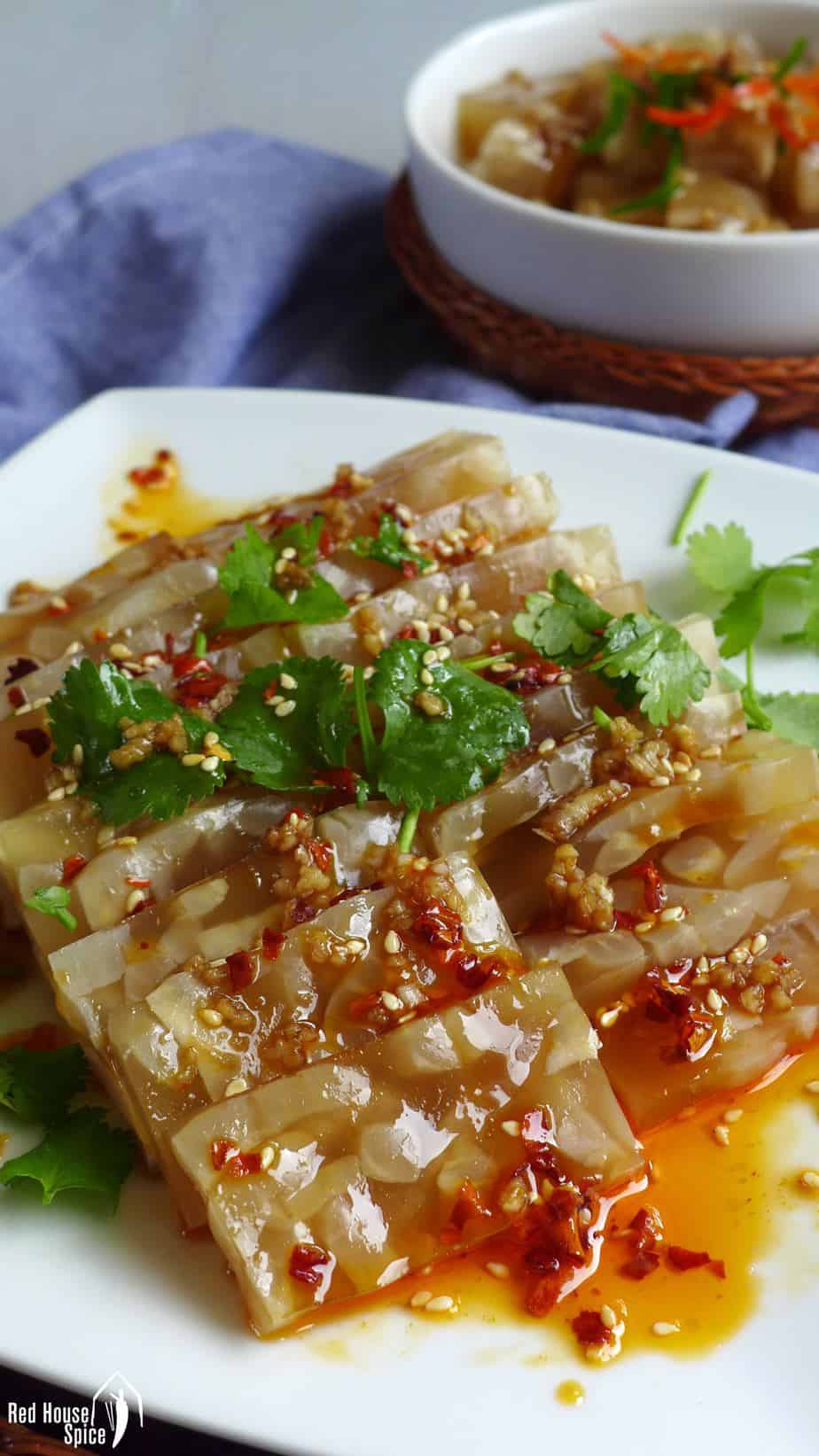
Last week, I served something new to my culinary fans in our Red House. In appearance, it was light brown with white strips running through it, had the texture of jelly and was seasoned with a savoury and spicy dressing. Everyone loved its texture and taste, but nobody could figure out what it was. It was actually Chinese pork rind jelly (肉皮冻), an aspic dish made from pork rind and its spiced stock.
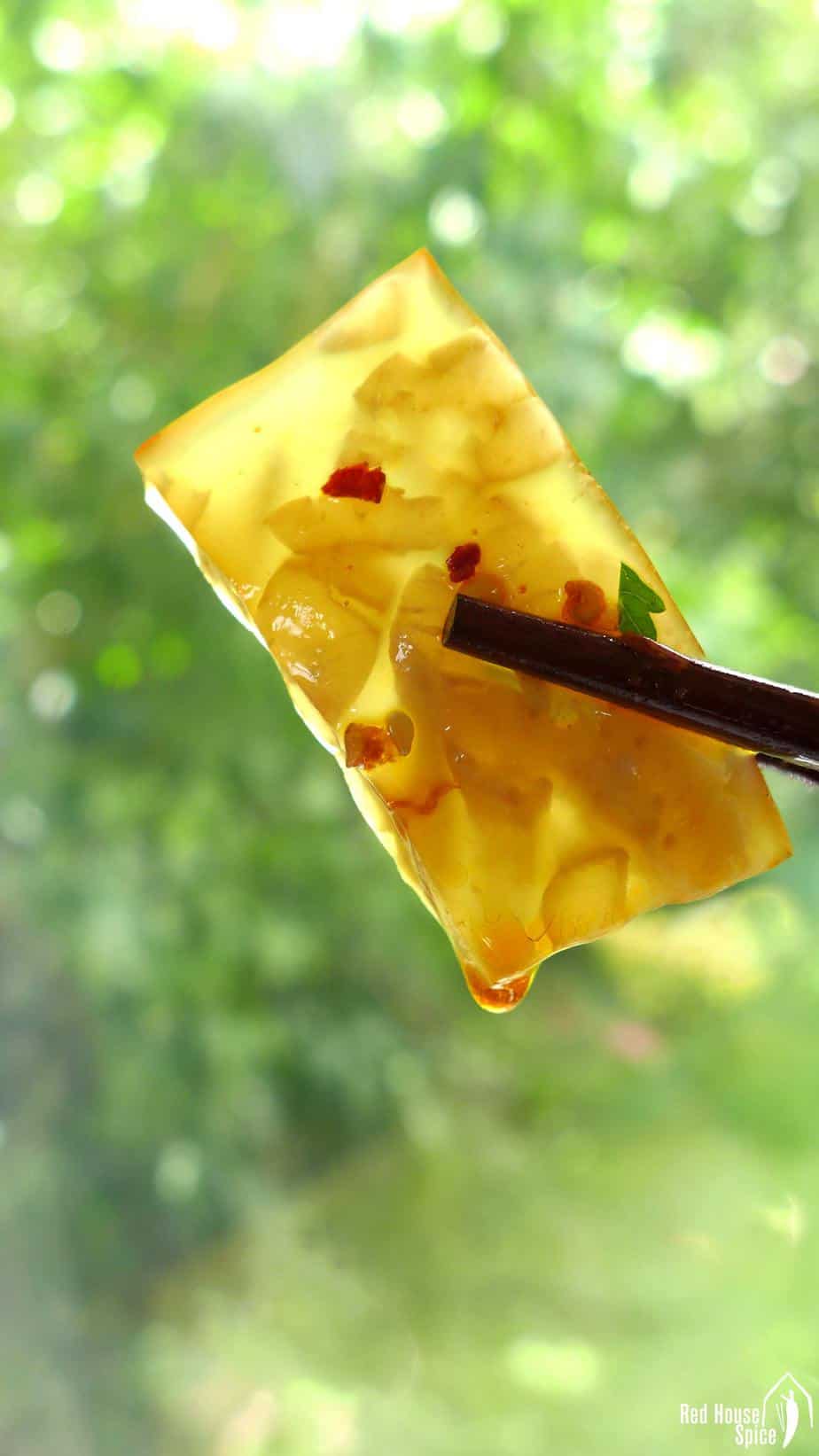
A popular dish using leftover pork skin
Pork rind jelly is a popular Chinese dish that my dad often cooked when I was young. Back then, meat sold in the market was often large chunks. My dad would keep pork rind for making this jelly dish which was loved by everyone in our family. I remember being amazed by how the stock (in which the pork rind is braised) turned into jelly on its own.
No commercial gelatin involved
As pork rind has a large amount of natural gelatin, after being boiled in water it thickens the stock. When cooled completely, the stock congeals then a solid jelly-like block forms. The making of this dish is very natural and simple. There is no commercial gelatin involved. The only thing you need is a bit of patience as it does take a while to boil, plus several hours to allow the stock to congeal.

How to braise the pork rind
Before braising, it’s essential to blanch the pork rind for a few minutes which makes slicing much easier (raw pork rind is too tough to cut). It also helps to remove any impurities. I suggest you scrape any fat remaining on the pork rind. This will make the final stock less cloudy. Similar to other Chinese meat dishes, this recipe calls for herbs and spices: scallions, ginger, star anise, cinnamon, bay leaf, etc.
Make a delicious dressing
When the stock (and the pork rind strips in it) is cooled and congealed to jelly, you can cut it into any shape you like. Smooth, slippery and springy, the texture of pork rind jelly is truly delightful. Now what you need is a tangy, flavourful dressing to complete the dish.
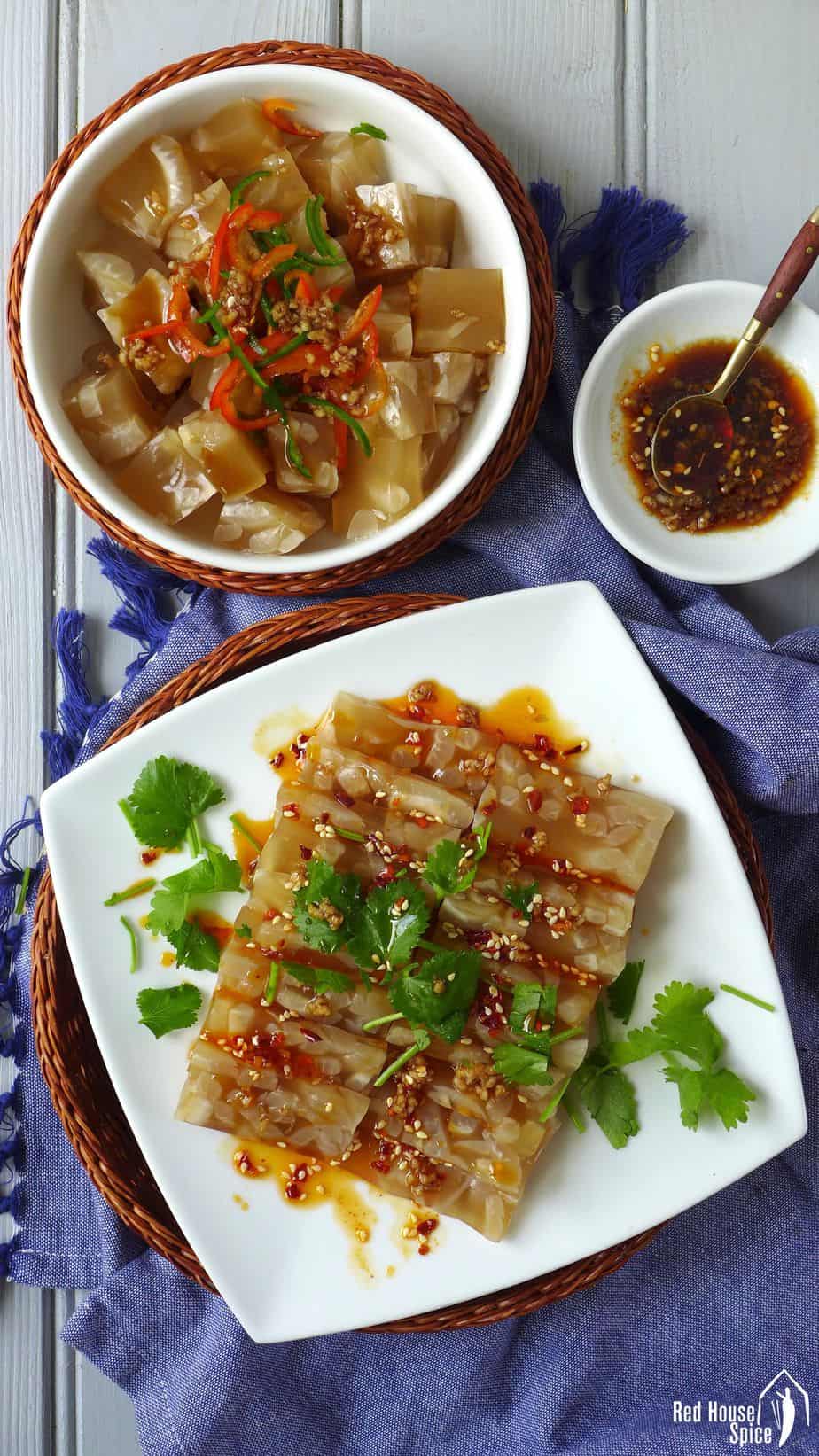
My favourite dressing for this dish is similar to the one I use in Smashed Cucumber Salad. It consists of light soy sauce, black rice vinegar, sesame oil, minced garlic, etc. It can be used in many Chinese salads, as well as for seasoning stir-fried dishes like Egg Fried Rice Noodles. To it an extra kick in taste, I always love adding a dash of Homemade Chinese Chilli Oil .
Use it in soup dumpling filling

Apart from today’s recipe, pork rind jelly can also be used in the filling for Chinese Soup Dumplings (Xiao Long Bao). After braising, pour the broth into a container through a sieve (Discard the pork rind). Store in the fridge until it turns into jelly. Finely chop it then add to the filling for soup dumplings.
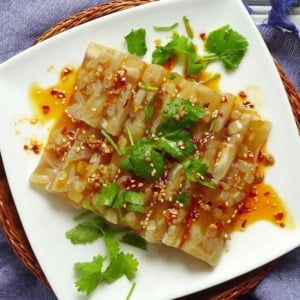
Chinese pork rind jelly (肉皮冻)
Ingredients
For braising the pork rind
- 200 g pork rind (pork skin) - 7oz
- 600 ml water - 2½ cups
- 2 tablespoon light soy sauce
- ½ tablespoon Shaoxing rice wine
- ¼ teaspoon salt
- 2 stalk scallions
- 3 slice ginger
- 1 star-anise
- 1 piece cassia cinnamon
- 1 bay leaf
For the dressing
- 4 teaspoon black rice vinegar
- 2 teaspoon light soy sauce
- 1 pinch salt
- 1 teaspoon pure sesame oil
- 3 cloves garlic - crushed
- 1 tablespoon homemade chilli oil - or fresh chilli, chopped
- Toasted sesame seeds
- Coriander - chopped
Instructions
- Boil pork rind for 3 minutes then drain. Cut it into narrow strips when cool enough to handle (see note 1).
- Pour water into a clean pot. Add pork rind strips and other ingredients from braising. Bring the water to a boil then leave to simmer (with the lid on) for 50-60 mins until the pork rind becomes very soft.
- Discard scallions, ginger and the spices. Pour everything else into a container. When completely cool, store in the fridge for 3-4 hours until a hard block of jelly forms.
- Cut the jelly block as you like (thin slices or cubes) then place on a serving plate. Mix all the ingredients for the dressing. Pour it over the jelly then serve with plain rice and other savoury dishes (see note 2).
NOTES
NUTRITION
NUTRITION DISCLOSURE: Nutritional information on this website is provided as a courtesy to readers. It should be considered estimates. Please use your own brand nutritional values or your preferred nutrition calculator to double check against our estimates.






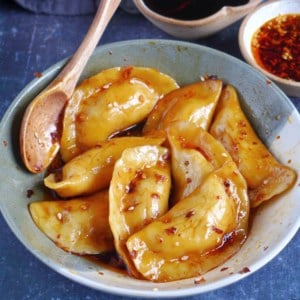
I’m making xiao long bao, and have far more jellied pork stock than the recipe calls for. Can I freeze it? (I know from experience agar agar gel does not hold up to freezing!)
You can freeze the pork stock jelly for sure.
Hi Wei, just to clarify, is pork rind = pork skin? I tried looking for pork rind at my local grocery store but they seem to only sell the back fat (with pork skin attached). In this case do, I just scrape away the back fat?
Yes Jia, pork rind equals to pork skin. Just simply trim off the fat part and use the skin only.
Save the back fat! Sold separately most of the time. Cut into small pieces and render into lard. Great on white rice and soy sauce and other ways you’d use lard in.
Agree Joyce! My parents always make lard themselves.
Could you use the jelly in soup dumplings?
Yes, you can! Just discard the pork rind pieces before you let the liquid set into a jelly.
I am British, I thought this would be a Chinese version of pork crackling (crispy pork rind), not jelly! Where this would be delicious to the British, I would remove the pork rind from the stock (and make it crispy!) and strain the liquid, the stock would make an excellent jelly for a pork pie. A pork pie is made from seasoned shredded pork shoulder cooked in a special pastry that doesn’t absorb liquid. When it cooks the meat inside shrinks, leaving a gap, and you pour pork jelly into a hole in the top to fill up the gaps and let it set. I have often thought about making a Chinese-style pork pie with KMC salt & pepper seasoning pastry, this sounds perfect.
I wd like to try out this pork jelly, very tempting !! ,how long can I keep the jelly in the fridge before serving ?
Hi Sandy! You can keep it in the fridge for up to 3 days. Happy cooking!